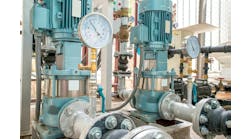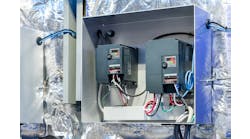Safety first is a common mantra. But at what cost?
Now this "cost" is relative. Bill C-35 is Canadian legislation that puts employees first by criminally charging owners and managers for workplace safety violations and employee lost-time injuries. Some of them have gone to jail as the result of the death of an employee due to the lack of safety considerations.
The Canadian automation magazine of record is Manufacturing Automation (MA). It does a good job of covering Canadian as well as international issues. It did a piece on safety a couple of years ago. I re-read this piece (yes, I'm a pack rat), and discovered some "odd" statements. For example, a machine builder that employs machine safety probably would have higher throughput, higher ROI and higher profitability from that machine process.
So one cost of not doing safety is possible jail time; another is the cost of not implementing safety as part of the machine design. Control Design regularly has written that machine builders in the U.S. see the same patterns.
That leads us to another cost, which is the physical cost of the hardware, additional installation time, start-up time and training.
I developed a project with five PLCs and six safety PLCs, all networked together. I devised a way of coordinating the control and safety, so that if an E-stop was hit at position A, then only "X" would happen. An E-stop at position B would allow only "Y" to happen. Segregation of control and safety outcomes was paramount.
This project did not give the user additional throughput time or profitability as a result of the safety solution used. It was strictly a CYA design—the customer's, not mine.
Also Read: Machine Safety is Elemental For New Automated Systems
The real moneyball problem comes when a light curtain or a gate switch is triggered, after which the user has to reset the system. Due to the complexity of the operation, a certain sequence has to be followed to get the systems back on line, and that takes time and resources. This is a money loser, not a money winner. But it has to be done, and the added complexity of using different vendors for safety and control add to the confusion, since one doesn't talk to the other except through I/O.
Fast-forward to the present, when I did a software review for MA on Rockwell Automation's Micro800 line of PLCs. The software is called Components Workbench, and it's free. It is an IEC 61131 editor that aggregates code for various bits of hardware, such as HMI, drives and safety appliances.
Safety relays and safety PLCs have come a long way, though the implementation isn't cheap. But at least having a common software platform aids in the development of and in the construction of a safety strategy.
In the application I noted earlier, the safety vendor is Pilz Automation Safety. It has a great product, and I also reviewed the new version 9.x of its software. It blows Components Workbench out of the water with presentation and functionality. It isn't free, but it's very affordable.
The learning curve is not steep, but it might not play well with others, even though it has an Ethernet interface, because it can't communicate over the network directly. Thus the complexity.
So how much cost really is incurred when implementing a safety strategy on a machine? Standard components such as E-stops are required. Are safety PLCs specified in the design documents? According to a safety representative, the answer is no.
It's not that the companies don't care about their employees' safety. It's all about competing with suppliers that don't include a safety strategy. If the customer is a utility, then cost is everything. If it's a packaging customer, while cost is still a factor, you as an OEM might expect the end user to implement his own strategy, since your machine might be part of a larger system. Then the end user is responsible for increasing his own throughput due to safety.
While it's really hard to say how safety helps with the bottom line, we know that it affects the top line regardless of how complex the strategy is.
We also know that costs are relative. How much are you willing to spend, invest or save with a strategy that has to be a winner, not a loser?
About the Author






